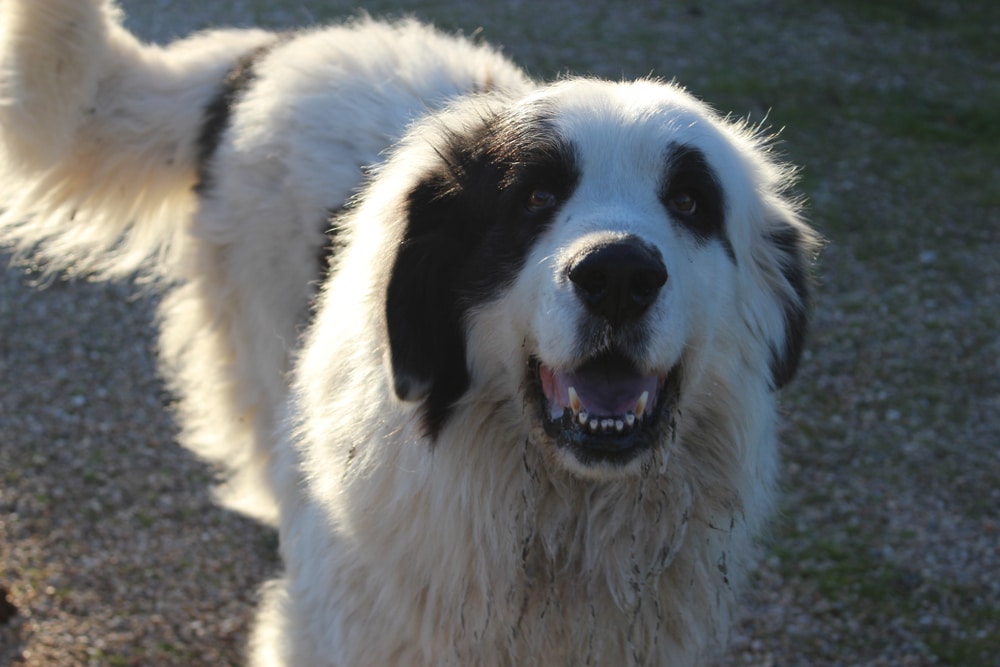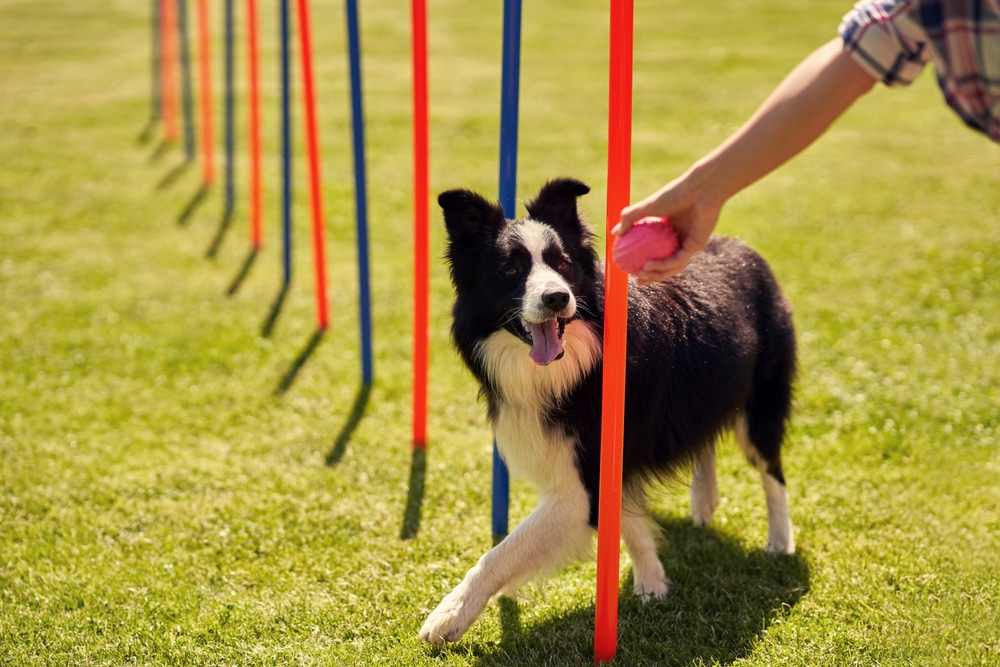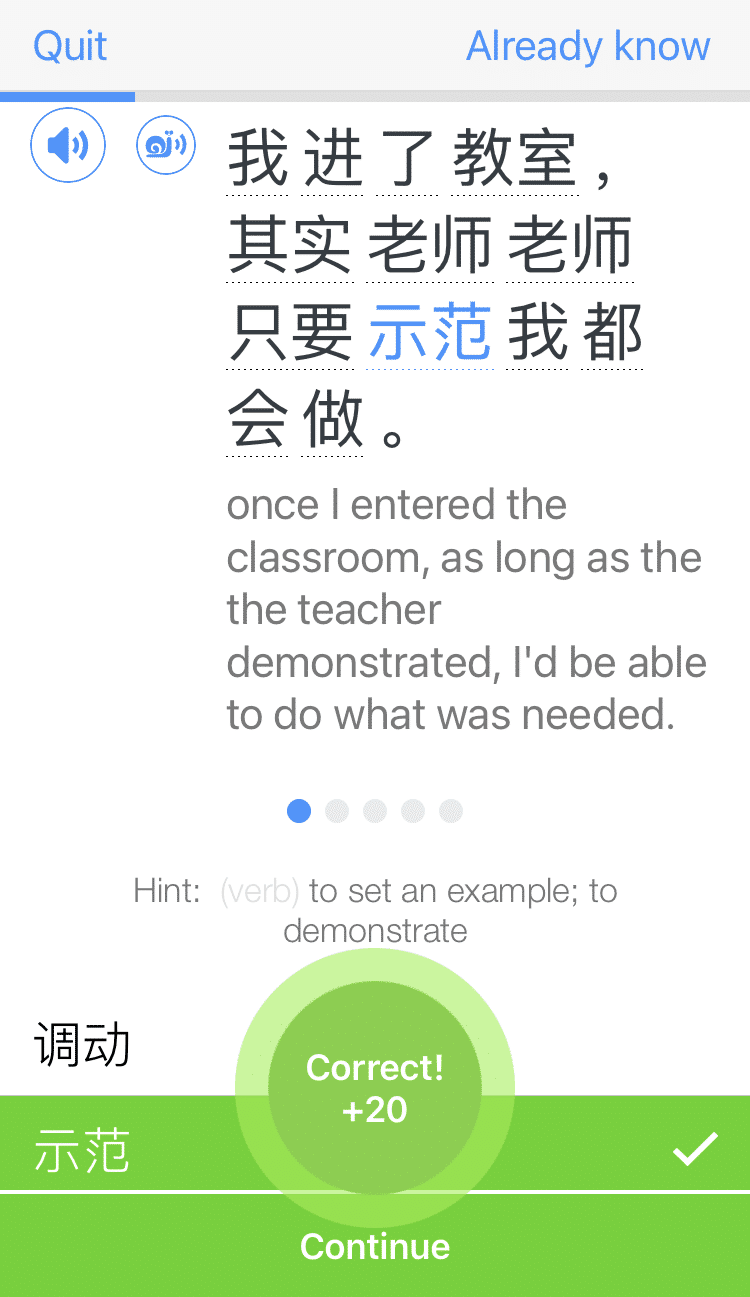
Top 21 Chinese Dog Commands for Training Your Pet (with Audio)
Using Chinese commands like 坐下 (zuò xia) and 过来 (guò lai) is a great way to improve your language skills while also training your dog. I’ve found that they’re simple, repetitive, and an easy way to impress native speakers.
Get ready to turn your 狗 (gǒu) — dog into your new language partner.
Contents
- 1. 不 (bù) — No
- 2. 坐(下) (zuò xia) — Sit (down)
- 3. 躺下 (tǎng xia) — Lie down
- 4. 站起来 (zhàn qǐ lai) — Stand up
- 5. 过来 / 来 (guò lai) — Come here
- 6. 站住 (zhàn zhù) / 停 (tíng) / 别动 (bié dòng) — Stay
- 7. 等等 (děng deng) — Wait
- 8. 安静 (ān jìng) — Be quiet
- 9. 走 (zǒu) — Go
- 10. 快一点 (kuài yì diǎn) — Faster
- 11. 停(止) (tíng zhǐ) — Stop
- 12. 出去 (chū qu) — Get out
- 13. 看我 (kàn wǒ) — Look at me
- 14. 叫 (jiào) / 吠 (fèi) — Bark / Speak
- 15. 握手 (wò shǒu) — Give me your paw
- 16. 给我击掌 (gěi wǒ jī zhǎng) — Give me 5
- 17. 接住 (jiē zhu) + 拿来 (ná lái) — Fetch
- 18. 放 (fàng) / 松开 (sōng kai) — Drop it
- 19. 装死 (zhuāng sǐ) — Play dead
- 20. 打滚 (dǎ gǔn) — Roll over
- 21. 乖乖 (guāi guāi) — Good boy/girl
- And One More Thing...
1. 不 (bù) — No
Let’s kick off the list with an essential because let’s be real—dogs always tend to do something they shouldn’t.
To nail the fourth tone, try to say this term in a strong, stern manner. I like to imagine striking something with a hammer when I need to make sure I say the fourth tone correctly. Just make sure you keep the tone consistent if you say this several times in a row.
2. 坐(下) (zuò xia) — Sit (down)

The perfect command to add to your arsenal to get your dog to stop running in circles. Plus, this is the perfect lead-in for many other commands on this list!
The word 下 literally means “down” and is placed after a verb to indicate a downward motion. You can also just say 坐, though—it doesn’t change the meaning of the command. 坐下 is similar to “sit down” in English, instead of “sit.”
3. 躺下 (tǎng xia) — Lie down
This is another classic command, and it’s a great way to set your dog up for some belly rubs.
Unlike in 坐下, the word 下 is an important part of this phrase, so be sure not to leave it out!
4. 站起来 (zhàn qǐ lai) — Stand up
Need your dog to stop lying around and start moving? Then use this command.
Just like in English, 站—which translates to “stand”—can be dropped for a shortened 起来 command.
5. 过来 / 来 (guò lai) — Come here

You’ll hear this command all the time, and not just directed at dogs!
过 literally means “to pass over,” and 来 indicates towards you. It’s pretty common to hear someone say 来 many times in a row when calling someone over, but you usually only hear 过来 said once.
Just like in English, you can accompany this command with a couple of waves of the hand or a pat on the knee.
6. 站住 (zhàn zhù) / 停 (tíng) / 别动 (bié dòng) — Stay
If your dog tends to go crazy on your walks, this command will certainly be handy for getting them to not move. You can also use it to get your dog to hold their position before fetching a ball.
站住, 停 and 别动 all mean roughly the same thing. I highly suggest sticking to one of these commands when you want to tell your dog to stay. Personally, I like to say 别动 since it sounds the most different from other commands.
7. 等等 (děng deng) — Wait
If you have an energetic dog like mine, then this command will probably be the most handy one in the entire list. This command works like a charm for getting my dog to stop for a few seconds, before ultimately going back to running around.
等等 can be said in one of two ways. You can say the second character without a tone, like what I’ve listed here. This means that it should be extremely short and crisp.
But it can also be said like děng děng. Just know that whenever third tones are paired together, the first of the two changes to the second tone. So make sure that you say this word like déng děng, with the second tone followed by the third tone.
For more practice with Chinese tones, you can listen to and shadow native speakers on FluentU.
FluentU takes authentic videos—like music videos, movie trailers, news and inspiring talks—and turns them into personalized language learning lessons.
You can try FluentU for free for 2 weeks. Check out the website or download the iOS app or Android app.
P.S. Click here to take advantage of our current sale! (Expires at the end of this month.)
8. 安静 (ān jìng) — Be quiet
You’ve probably heard 安静 before used as an adjective, but did you know it can also be used as a command?
If your dog is anything like mine, you’ll probably end up using this command a million times throughout the day. Because let’s be real, sometimes you just need to get your dog to stop yapping away!
You can put a finger in front of your lips to emphasize that you want your dog to be quiet. Just be careful to use the first tone when saying 安. A lot of people tend to mess it up, especially when they are frustrated or angry.
9. 走 (zǒu) — Go

Whenever I take my dog on a long walk, he will always reach a point where he plops down on the ground, refusing to go any further (or starts begging for belly rubs). That’s when I know it’s time to use this command.
走 is said with the third tone, which is particularly tricky for English native speakers. Like other tricky words or tones, practice saying it slowly before upping the speed. I noticed that when I go too quickly my third tone turns into the second.
Sometimes I’ll also tug the harness while saying this command so that my dog knows that it’s time to finish up our walk.
10. 快一点 (kuài yì diǎn) — Faster
Get your dog to pick up the pace by telling him “快一点”.
一点, which literally means “a little bit,” is optional and serves as a way to soften the command.
11. 停(止) (tíng zhǐ) — Stop
Sometimes you just need to get your darn dog to quit doing some things. That’s where this command comes into play.
You may recognize this 停 from the stay command above. Well, 停 directly translates to “stop” when said alone, so it depends on the context of the command. The optional 止 also translates to “stop” and is usually added to this word to make it two syllables, which is the preferable length of words in Chinese.
Make sure to be firm when you say this command so that your dog knows you are serious. You can also hold up your hand with your palm facing your dog for further emphasis.
12. 出去 (chū qu) — Get out
Get your dog out of places they shouldn’t be with this command.
Notice that the 去 does not have a tone. This happens in some two-syllable words in Chinese, and it simply means that you should say this word in a short, quick manner.
13. 看我 (kàn wǒ) — Look at me

If you’ve studied Chinese before, you probably already know this phrase. But did you know that you can also say this to your dog to get them to focus on you?
Just like in 不, getting the fourth tone right is important in this command since it’s the verb. The trick is to say the words slowly and make sure you are exaggerating the tone.
Using a firm voice will also help you say the sharp striking sound of the fourth tone correctly, while also grabbing your dog’s attention so they can get ready for your next command!
14. 叫 (jiào) / 吠 (fèi) — Bark / Speak
叫, which means “to call,” is another common word in Chinese. You’ve probably heard it in the phrase 你叫什么名字?(nǐ jiào shén me míng zi) — What’s your name? (lit. What are you called?) But it can also be used to tell a dog to “speak” (basically to bark).
吠 is a slightly more formal version, as it directly means “bark.” But it’s just as common!
15. 握手 (wò shǒu) — Give me your paw
Get your fur baby to learn the most common trick in Chinese with this phrase.
You might already be familiar with 握手, which literally means “to shake hands.”
You can hold out your hand and order your dog to 握手. If you want him to place his other paw in your hand afterwards, you can say 另一只 (lìng yì zhī) or 另一个 (lìng yí gè).
16. 给我击掌 (gěi wǒ jī zhǎng) — Give me 5
This command combines the phrase 给我, which means “give me,” and the word for “high five” or “clap.”
You can try holding your hand outward and having your dog tap your palm with their paw. I love to use this command right before giving my dog a treat.
17. 接住 (jiē zhu) + 拿来 (ná lái) — Fetch

These two phrases are exactly what you will need the next time you are playing with your dog.
Both of these commands can roughly mean “fetch” and are said when you want your dog to retrieve something.
接住 is closer in meaning to “catch,” while 拿来 means “bring here.” So you might want to say 接住 before or while throwing something, while 拿来 is better for after it’s been thrown.
You can also say 給我 after an object and then add 拿来 or simply say it alone to order your dog to bring that object to you. For example: 球球给我拿来 (qiú qiú gěi wǒ ná lái), literally meaning “Bring the ball to me.”
18. 放 (fàng) / 松开 (sōng kai) — Drop it
Did your dog pick up a random object during your park walk? Or do you want your dog to let go of the toy during your game of fetch? Then give this command a whirl.
松开 can be tricky to say because of the toneless 开. A lot of native English speakers will tend to use the fourth tone, instead of dropping the tone altogether. But it’s important to pronounce the 开 quickly and with an even pitch as much as possible.
19. 装死 (zhuāng sǐ) — Play dead
One of the biggest party tricks a dog can learn will suddenly become even more impressive when you teach them to do it in Chinese.
装死 is actually two words shortened into one to make it two syllables, which the Chinese prefer. 装 comes from 假装 (jiǎ zhuāng) — to pretend and 死 comes from 死亡 (sǐ wáng) — to die.
Sometimes I will throw in finger guns in a firing motion when I use this command to add to the playfulness.
20. 打滚 (dǎ gǔn) — Roll over
This is another fun trick you can teach your dog to wow your friends.
打滾 is a typical verb in Chinese used to describe rolling around. However, this command can also be shortened to just 滚, which is my personal favorite since it pairs perfectly with a quick circle motion of the pointer finger.
21. 乖乖 (guāi guāi) — Good boy/girl

Okay, this one really isn’t a command. But I am going to throw it in here now that the list is done because let’s face it—your dog is going to need some praise after all the commands you’ve been throwing at them.
乖 literally translates to “obedient” or “well-behaved.” You’ve probably heard parents compliment their children by saying these exact words. And dogs are no different!
Now that you are equipped with some of the best dog commands, you are ready to get out there and start teaching your dog. And in no time, both you and your dog will have better Chinese skills!
Download: This blog post is available as a convenient and portable PDF that you can take anywhere. Click here to get a copy. (Download)
And One More Thing...
If you want to continue learning Chinese with interactive and authentic Chinese content, then you'll love FluentU.
FluentU naturally eases you into learning Chinese language. Native Chinese content comes within reach, and you'll learn Chinese as it's spoken in real life.
FluentU has a wide range of contemporary videos—like dramas, TV shows, commercials and music videos.
FluentU brings these native Chinese videos within reach via interactive captions. You can tap on any word to instantly look it up. All words have carefully written definitions and examples that will help you understand how a word is used. Tap to add words you'd like to review to a vocab list.
FluentU's Learn Mode turns every video into a language learning lesson. You can always swipe left or right to see more examples for the word you're learning.
The best part is that FluentU always keeps track of your vocabulary. It customizes quizzes to focus on areas that need attention and reminds you when it’s time to review what you’ve learned. You have a 100% personalized experience.
Start using the FluentU website on your computer or tablet or, better yet, download the FluentU app from the iTunes or Google Play store. Click here to take advantage of our current sale! (Expires at the end of this month.)






